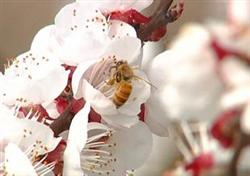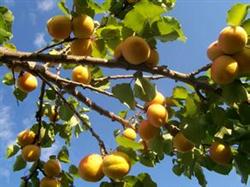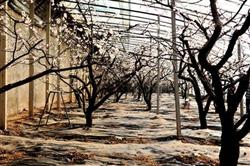Do a good job of pollination of apricot trees in time

Why apricot trees often blossom a lot, but seldom bear apricots? The main reason is poor pollination. In order to improve the fruit setting rate of apricot blossom, we must prepare in advance and do a good job of apricot flower pollination in time. For the main varieties of apricot, the varieties with natural pollination ability, low abortive flower rate and high natural pollination fruit setting rate should be selected, and the pollination trees with good compatibility, consistent flowering period, large pollen quantity and high pollen germination rate should be selected. Early spring irrigation, delay apricot flowering, flowers can avoid the harm of late frost; smoke and frost prevention in apricot orchard. One month before flowering and before flower bud germination, 0.1%-0.3% salt water was sprayed once respectively to reduce the freezing of flower organs; and artificial pollination of apricot flowers could play a good role in pollination of apricot flowers and increase the fruit setting rate. The pollen used for artificial pollination should use the mixed pollen of the pollinated variety tree and the main variety. The pollen collection of pollinated varieties should be taken at the bell stage or the early flowering stage. After picking apricot flowers, take two flower pairs and rub off the anthers. You can also knead the flowers first, then screen out the anthers, remove the impurity and lay the collected anthers on smooth paper, and place them in an indoor room where the temperature is kept at 20 ℃ ~ 25 ℃ and the humidity is kept at 60% 80%. After 24 hours, the anthers crack and release the pollen, wait for drying, collect the pollen in glassware and store it in a self-made drying dish. Drying dishes can be self-made, you can use a paper tube or iron tube, put some quicklime at the bottom of the tube, cover the lime with paper, put pollen on the paper, and cover the mouth of the tube. From the early flowering stage to the late flowering stage, pollination occurs twice at intervals of one to three days. For a long time, only 1-3 newly blooming flowers in the center of the inflorescence are given; when there are few flowers, all newly blooming flowers should be pollinated. When pollinating, put the pollen in a glass bottle (not too much), dip the pollen with a brush, feather, paper twist or rubber head, and apply lightly to the pollinated stigma. Once dipped in pollen, 4-5 flowers can be pollinated continuously. According to the tree age, tree potential, and management, the number of pollinated flowers per tree was determined. Trees with more blossoms and poor fertile and water conditions can pollinate fewer flowers and vice versa. After each pollination, the remaining pollen is poured out, ventilated and dried (without heating), and then crushed into powder on the glass plate with a glass bottle (stick). It can be used again.
- Prev

To improve the fruit setting rate of apricot trees, rational fertilization is necessary.
"Yunda Quan Fruit" is a new special growth aid for the balance of vegetative growth to reproductive growth on fruit trees and fruit vegetables (such as tomatoes, eggplants, melons, etc.). Its main features are: ① non-toxic performance, so that the fruit does not leave any residual poison, to achieve pollution-free, become a green rest assured product. ② promotes flowers quickly and quickly.
- Next

Installation of apricot trees to grasp "ten tubes"
Because of its cold and drought tolerance, most apricot trees are planted on slopes with poor ridges, and because their roots are strong and spread all over the garden, it is difficult to ploughing and ploughing. In addition, the standard of soil preparation is not high, which often results in soil consolidation and poor permeability. prone to soil-borne diseases (such as root rot), difficulties in fertilization, hard ploughing and other phenomena.
Related
- Moge, come on! The staff of the peasant association in the producing area of cantaloupe were frightened when the crowd gathered.
- Causes and Solutions of low Fruit setting rate of Apple
- Symptoms and control measures of passion fruit virus disease
- Fruit growing lesson: how do apple orchards keep high yields?
- Can you build orchards in the mountains? What are the pros and cons?
- How to manage the coloring period of Crisson grape?
- This paper introduces the processing technology of two kinds of fig products.
- How much is a month for retired teachers in rural areas by 2020?
- How can strawberry planting increase sugar content? We should pay attention to management in many aspects.
- What are the cultivation techniques on how to improve the yield of golden fruit?

